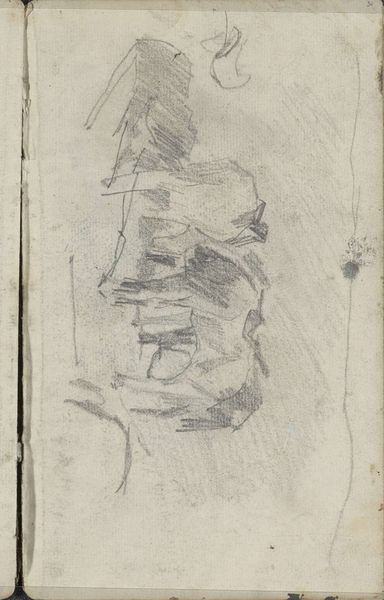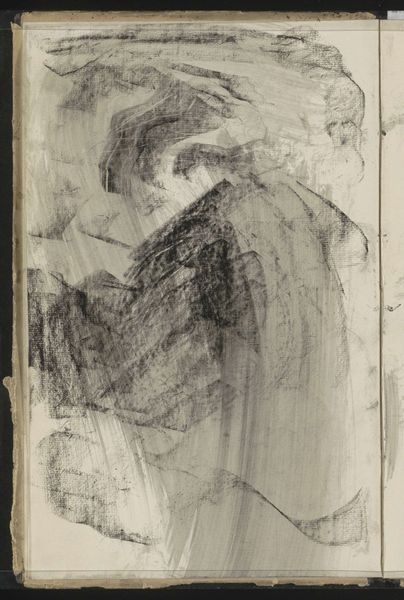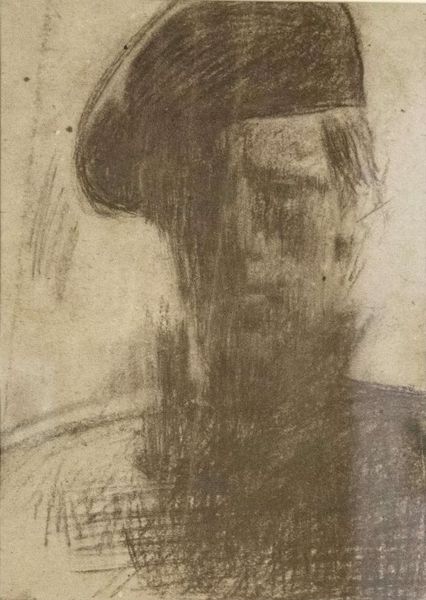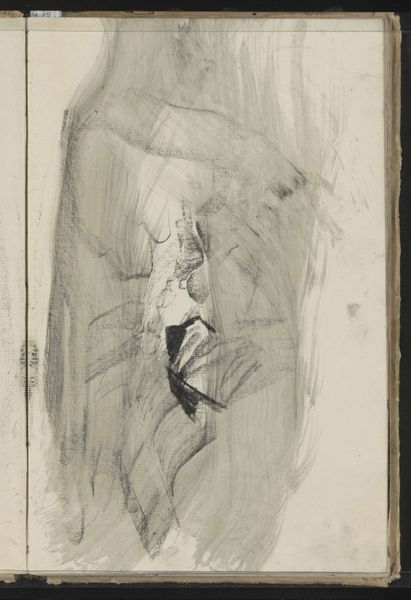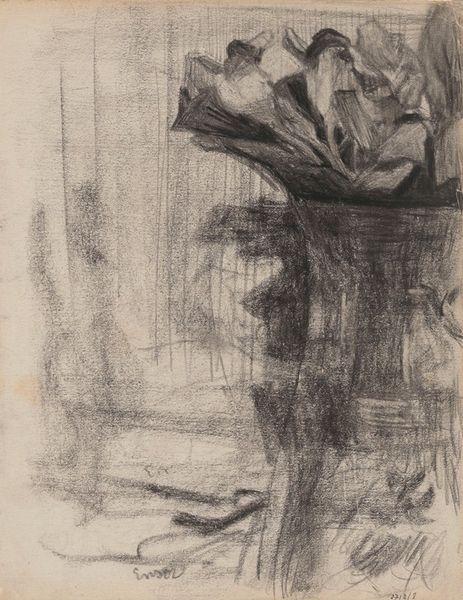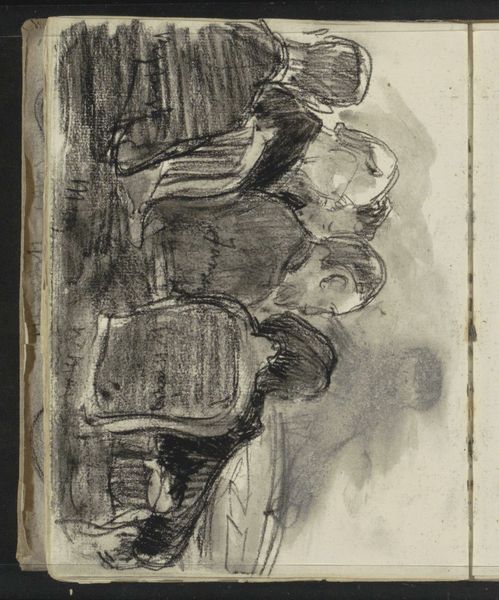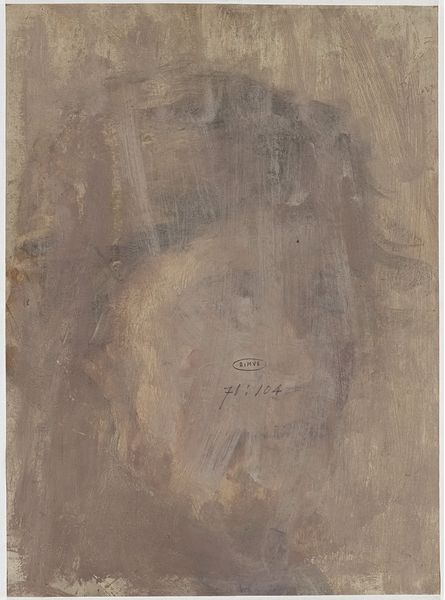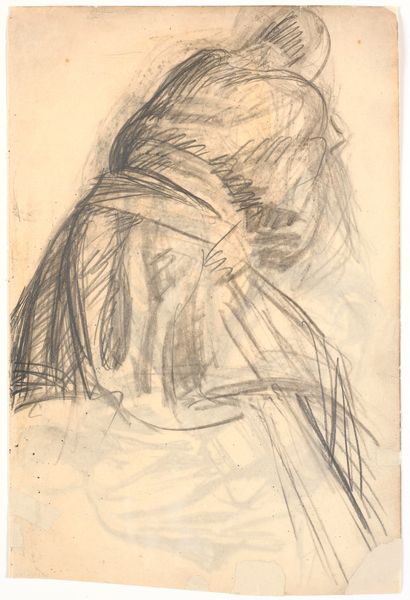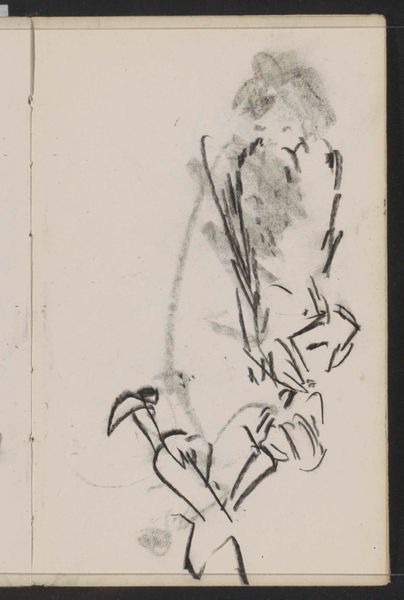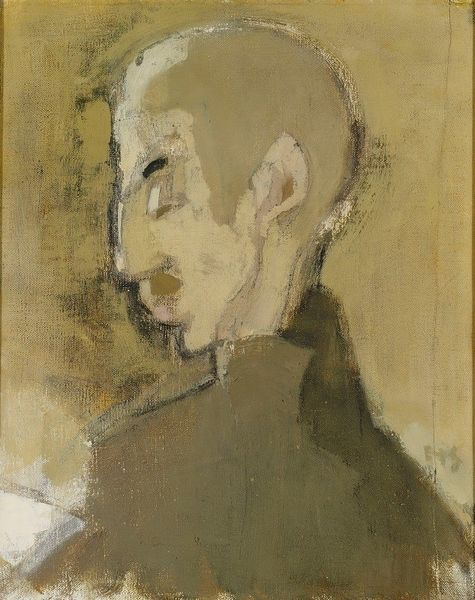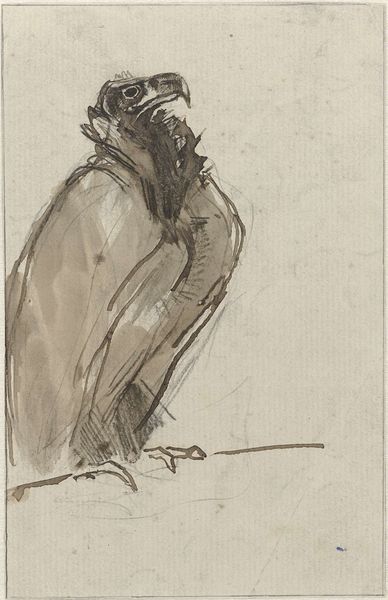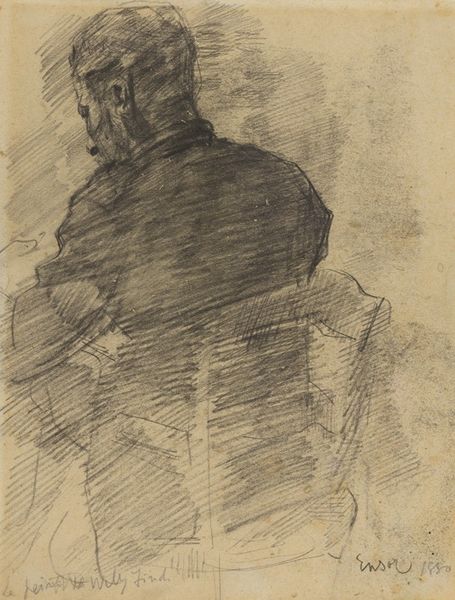
Dimensions: 31 x 19 cm
Copyright: Public domain
Editor: Here we have Francesco Didioni's "Portrait of Mr. Cova" from 1878, a charcoal drawing with soft, blurred edges. I'm immediately struck by the subject’s contemplative mood, almost melancholic. What can you tell me about the historical context of portraits like this one? Curator: Considering this portrait through a historical lens, it's vital to understand the evolving role of portraiture in the late 19th century. Photography was becoming increasingly accessible, challenging the painted portrait's role as the primary means of capturing likeness. Didioni, working in charcoal, embraces a certain softness, moving away from strictly mimetic representation, wouldn't you agree? Editor: Yes, absolutely. It feels less about strict likeness and more about conveying a feeling, maybe even a romanticized view of the sitter. How would a public exhibition setting have impacted the work? Curator: The intended public would also shift interpretations. Exhibition spaces were becoming more democratic, influencing artists to create work that could resonate with broader audiences while simultaneously navigating the tastes of powerful patrons and critics. The sitter's perceived social standing would shape the way a nineteenth-century viewer might approach the artwork, almost like an invitation to engage with particular narratives. Do you notice any aspects that communicate Mr. Cova's place in society? Editor: His tailored clothing and slightly world-weary expression hint at a certain bourgeois sophistication, wouldn't you agree? I wonder how much Didioni played with those expectations? Curator: Precisely. Didioni likely knew exactly how to communicate that visually to appeal to audiences of his time. Seeing the portrait in our modern context divorced from its original display means understanding those societal influences. It offers a fascinating insight into how art functioned within its specific social and political spheres. I suppose it makes me think more broadly of the different ways artistic taste is formed, too. Editor: Absolutely. It’s incredible how understanding that interplay unlocks new layers of meaning in this single charcoal drawing. Curator: Indeed! This deeper understanding will enrich our approach to interpreting not just this work, but all art.
Comments
No comments
Be the first to comment and join the conversation on the ultimate creative platform.
